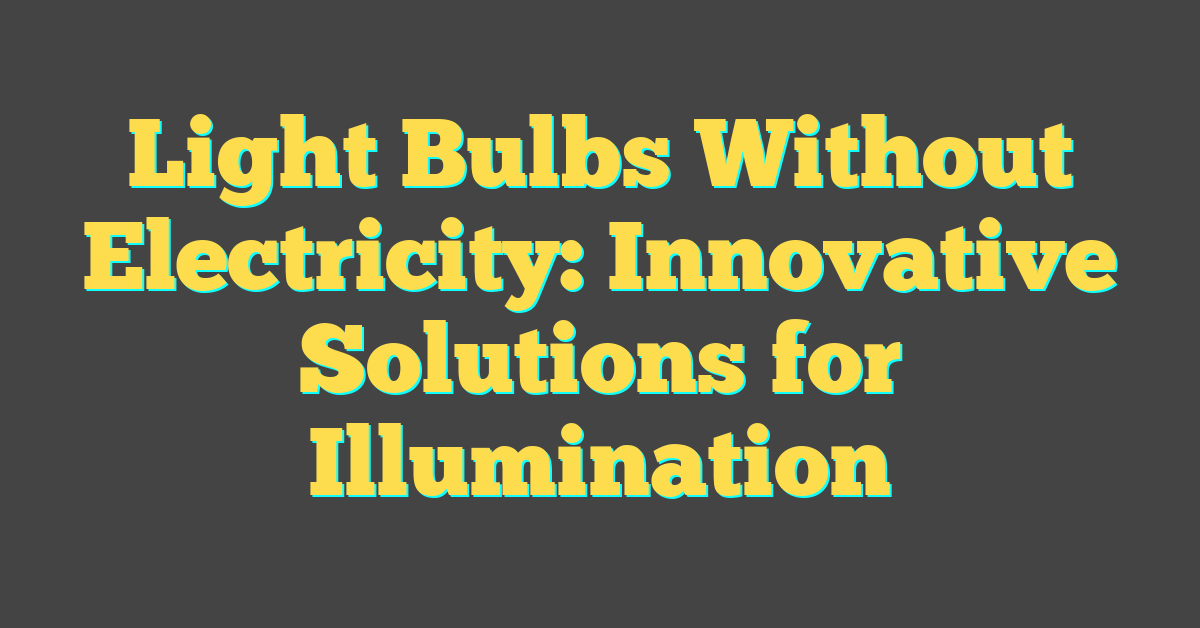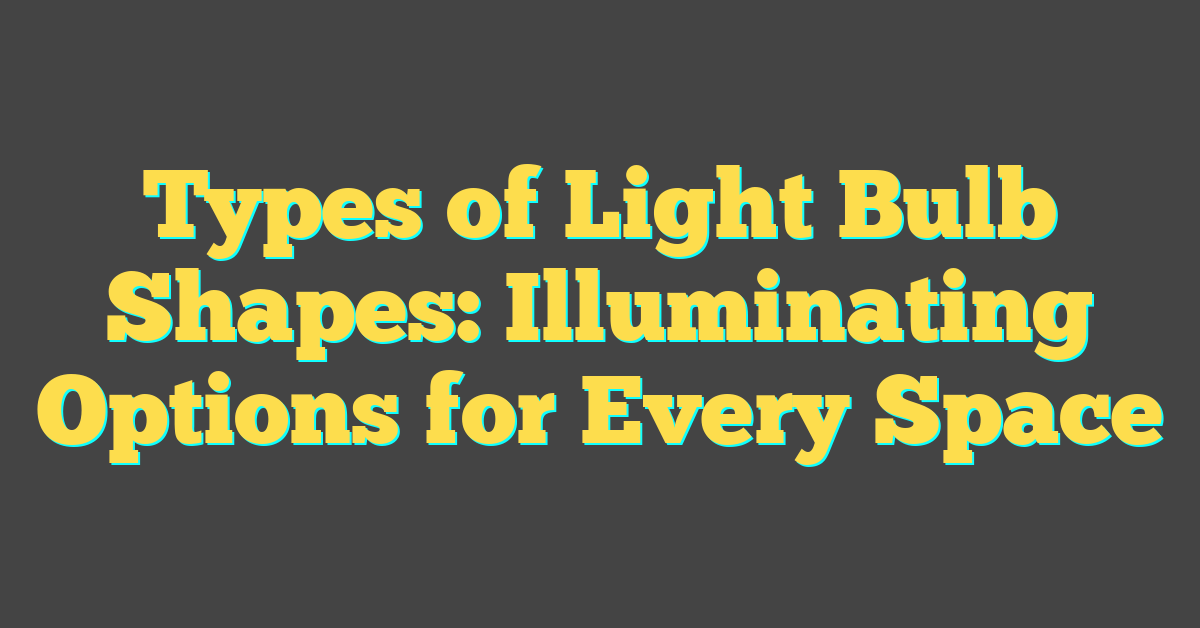Incandescent light bulbs have been a staple in homes for over a century, illuminating spaces with their warm glow. Yet, they are not without their problems. Unlike their more modern counterparts, these bulbs are less energy-efficient, converting more of their energy into heat than light. This inefficiency not only costs you more on your electricity bill but also contributes to greater energy consumption on a global scale.


Moreover, there are safety and health risks associated with the use of incandescent bulbs. The heat they emit can pose a fire hazard if they are placed too close to flammable materials. Prolonged exposure to the intense light can also be harmful to your eyes, with some studies suggesting a link between exposure to such light and eye damage. As awareness of these issues grows, many are turning to alternative lighting technologies that offer safer, more environmentally friendly, and cost-effective solutions.
Key Takeaways
- Incandescent bulbs are less energy-efficient, increasing bills and energy use.
- They pose potential health and safety risks, including eye damage and fire hazards.
- Alternatives to incandescent lighting are growing in popularity for their efficiency and safety.
History of Incandescent Bulbs
https://www.youtube.com/watch?v=uszG5FD1_Uw&embed=true
Your journey through the world of lighting starts with understanding the history of incandescent bulbs. You’ll explore their inception, how they’ve evolved over time, and the legislative actions that have transformed their place in the market.
Invention and Evolution
The story of incandescent bulbs begins with their invention. While Thomas Edison is often credited with the creation of the practical incandescent bulb, his journey stood on the shoulders of many inventors. In 1802, Humphry Davy invented the first electric light by passing a current through a platinum strip. Edison’s 1879 improvement was the first commercially practical incandescent light, thanks to a durable carbon filament. Over time, incandescent bulbs saw refinements, such as tungsten filaments that offered longer life and better efficiency.
Legislation and Phase-Out
As awareness of energy efficiency grew, legislation began to shape the future of lighting. The Energy Independence and Security Act of 2007 included provisions to phase out the manufacture and sale of traditional incandescent bulbs in favor of more energy-efficient lighting options. Starting with the ban on 100-watt bulbs in 2012, the Act aimed to eventually eliminate most incandescent lighting from the market. Fast-forwarding to recent developments, you can see the culmination of these efforts where the ban on incandescent bulbs is now largely in effect, signaling the end of an era for this once revolutionary technology.
Energy Efficiency and Cost
https://www.youtube.com/watch?v=cQwxU1syGzk&embed=true
When you think about lighting your home, understanding energy efficiency and cost implications is crucial. That’s because the type of bulb you choose can have a significant impact on your utility bills and the environment.
Comparing Bulb Types
Incandescent bulbs: While once common, they are now widely considered to be the least energy-efficient type of lighting. For a long time, incandescent bulbs were the standard, but they convert less than 10% of the energy they consume into light, with the rest lost as heat.
LEDs (Light Emitting Diodes): On the other hand, LEDs are on the rise due to their energy efficiency. They use up to 85% less energy than incandescent bulbs and last 25 times longer. LEDs offer a significant number of lumens per watt, making them a much more cost-effective option in the long run.
CFLs (Compact Fluorescent Lamps): These bulbs are more energy-efficient than incandescent ones and less expensive than LEDs. However, they don’t last as long as LEDs and contain mercury, which may complicate disposal processes.
Impact on Utility Bills
Switching to energy-efficient bulbs can lead to substantial energy savings on your utility bills. To illustrate:
- Incandescent bulb (60-watt): It uses more energy for the same brightness, resulting in higher electricity costs.
- CFL (14-watt): Consumes less energy and can save you about $30 in electricity costs over its lifetime compared to an incandescent bulb.
- LED (10-watt): Though more expensive upfront, it can save you even more than a CFL over its lifetime, not to mention the savings from buying fewer replacements due to its longer life.
It’s important for you to review energy efficiency standards set by the Department of Energy, as these standards are designed to ensure that the most energy-efficient bulbs are used, thereby helping you save money and reduce environmental impact.
Health and Safety Risks
https://www.youtube.com/watch?v=I_3b4cgAczQ&embed=true
« Good Alternative to Light Bulbs: Eco-Friendly Lighting Solutions
Reasons Light Bulbs Explode: Understanding the Causes »
When it comes to incandescent light bulbs, you might primarily consider their cozy glow, yet they carry certain risks. It’s important to handle them with care, as the hazards range from breakage to heat-related dangers and even potential optical effects on your eyes.
Hazards of Breakage
Incandescent bulbs are fragile. If they fall or are struck, they can easily shatter, leaving shards of glass that are dangerous to handle. You should carefully clean up broken glass to avoid injury, wearing gloves to protect your hands, and dispose of the pieces safely to prevent accidents.
Thermal Dangers
Did you know incandescent bulbs convert more energy into heat than light? This makes them hot to the touch. You should wait for a bulb to cool before handling to avoid heat dangers like burns. Be mindful of where you install them to reduce the risk of nearby objects heating up and potentially catching fire.
Optical Effects on Eyes
The bright light from an incandescent bulb is not just harsh on your eyes; it’s potentially harmful. Cataracts and other eye conditions can develop from direct, intense exposure. It’s advisable to use lampshades or diffusers with your incandescent bulbs to soften their glow and protect your vision.
Environmental Considerations

In considering the environmental impacts of incandescent light bulbs, you should be aware that they contribute to landfill waste and carbon emissions. Let’s explore how these bulbs are affecting the planet.
Waste and Pollution
When you discard an incandescent light bulb, it usually ends up in a landfill. Here, it adds to the mounting trash problem. Incandescent bulbs aren’t considered chemically dangerous and don’t contain mercury, unlike their compact fluorescent counterparts, which means they aren’t classified as hazardous waste. However, the sheer volume of bulbs thrown away creates significant waste that can take years to decompose.
Carbon Footprint
Every incandescent bulb uses more energy than energy-efficient alternatives like LEDs. This higher energy usage leads to increased carbon emissions from power plants, which contribute to climate change. Specifically, incandescent bulbs convert less than 10% of the energy they consume into light, while the rest turns into heat, making them less energy-efficient and adding to your carbon footprint.
Fire Hazards
https://www.youtube.com/watch?v=VSylE_mwgXU&embed=true
Incandescent light bulbs, while common in many households, can pose significant fire dangers if not used properly. Their thin glass shells can get extremely hot, leading to the potential ignition of flammable items and even electrical wires. Here’s what you need to know to keep your home safe.
Incidents and Prevention
How do incidents occur? It’s often a combination of high temperatures from the bulb and close proximity to combustible materials. If your bulb is in an enclosed space or near items like cardboard boxes or clothing, you’re at a higher risk of fire. Pay attention to how you position lamps and make sure bulbs are not in contact with other objects. For example, if an incandescent bulb touches paper, it might ignite within minutes.
To prevent such incidents, ensure bulbs have ample space around them for air to circulate, which helps dissipate heat. Also, avoid using them in confined, unventilated areas. If you have lamps in closets or storage rooms, reconsider their placement or switch to safer lighting options.
Safe Usage Guidelines
What are the guidelines?
- Always check that light fixtures and lamps are in good condition.
- Ensure that bulbs have at least 18 inches of clearance from potentially combustible materials, as per the 2020 National Electric Code.
- Consider upgrading to LED bulbs, which operate at much lower temperatures and reduce the fire risk.
Follow these steps and always be mindful of where and how you’re using incandescent bulbs to protect your home from unnecessary fire hazards.
Alternative Lighting Technologies
https://www.youtube.com/watch?v=kYZGqEewIHE&embed=true
As you consider moving away from incandescent light bulbs, there are several efficient alternatives that provide better energy savings and longer lifespans.
LED Bulbs and Their Advantages
LED bulbs are the front-runners in energy-efficient lighting. Unlike incandescent bulbs, LEDs (Light Emitting Diodes) use up to 90% less energy and can last 25 times longer. They’re versatile enough to be used in various applications, from soft white lighting in your home to traffic signals outdoors, and they emit less heat. Whether you need flood lights for your backyard or desire a cozy ambiance indoors, LEDs provide a broad range of color temperatures and styles.
- Energy Savings: Consume significantly less power than traditional bulbs.
- Longevity: Offer a lifespan of up to 25,000 hours or more.
- Versatility: Available for a wide range of uses including traffic lights and decorative lighting.
Compact Fluorescent Bulbs
Compact Fluorescent Lamps, or CFL bulbs, are another beneficial option. They use about 70% less energy than incandescent bulbs and can last around 10 times longer. Although not as energy-efficient as LEDs, they are less expensive initially, making them a budget-friendly choice for your lighting needs.
- Cost-Efficiency: Generally cheaper than LED bulbs upfront.
- Energy Consumption: Lower than incandescent bulbs by about 70%.
Specialty Bulbs
In addition to general lighting, there are specialty bulbs for specific purposes. Halogen bulbs, for example, offer a brighter light and are often used in under-cabinet lighting or car headlights. Though they’re more efficient than classic incandescent bulbs, they still lag behind LEDs and CFLs in terms of energy use and lifespan.
There are also black lights, which emit long-wave ultraviolet light and are typically used for artistic and decorative effects. While these specialty bulbs are not as common for everyday home lighting, they are important for certain niche applications where specific lighting effects are desired.
- Halogen Bulbs: Brighter and more efficient than incandescents but not as efficient as LEDs.
- Black Lights: Used for specific effects and not general home lighting purposes.
Efficiency Standards and Compliance

In light of recent changes in energy conservation, it’s important for you to understand how efficiency standards impact your lighting choices and what compliance means for you and the market.
Understanding Lumens and Watts
Lumens measure the amount of light produced by a bulb, while watts gauge the power it consumes to produce that light. Greater lumens mean more light output, but the goal is to achieve this with lower watts for higher efficiency. The U.S. Department of Energy enforces a standard for this ratio to ensure you’re getting the most light for the least power.
Government Regulations
Government regulations on light bulbs have evolved. The standards set by the Appliance Standards Awareness Project alongside the government require your bulbs to have a minimum efficiency. For example, as per the rules issued, most light bulbs must produce at least 45 lumens per watt, making traditional incandescent bulbs nearly obsolete—a significant stride for energy conservation. These changes lead to monetary savings for you while reducing energy consumption on a national scale. Compliance with these regulations is vital for manufacturers, and adherence is beneficial for your wallet and the planet.
Proper Disposal of Incandescent Bulbs
https://www.youtube.com/watch?v=RUsGkJyEXqg&embed=true
When your incandescent bulbs burn out, it’s important to dispose of them correctly to prevent environmental harm and potential health risks.
Recycling Options
Local Recycling Programs: Start by checking with your local waste management services to see if they offer recycling for incandescent bulbs. Although they don’t contain mercury like CFLs, some programs accept them for material recovery.
_Drop-off Centers: Look for local drop-off centers dedicated to recycling various household items, which may include incandescent bulbs. These facilities properly handle the bulbs’ components, ensuring they don’t end up in landfills.
Hazards of Improper Disposal
Environmental Impact: Throwing incandescent bulbs in the trash can lead to the release of toxic materials when bulbs are broken, posing risks to sanitation workers and the environment. Bulbs in landfills could break and contaminate the soil.
Toxic Fumes: If incandescent bulbs are incinerated, there’s a risk of emitting toxic fumes. Though they contain less toxic material than other bulb types, proper disposal is still crucial to avoid these potential hazards.
Storage and Handling

When storing and handling incandescent bulbs, your safety and the bulbs’ longevity are paramount. Proper maintenance can prevent accidents and ensure that each bulb serves its full potential life without causing harm to you or your surroundings.
Best Practices for Bulb Longevity
- Store your bulbs in a cool, dry storage room, away from extreme temperatures that could cause the delicate glass bulb to crack or shatter.
- Handle bulbs with care to avoid damage. The oils on your skin can create hot spots on the bulb’s surface, shortening its lifespan, so consider using a cloth or gloves when handling new bulbs.
Avoiding Accidents
- Always ensure bulbs are completely cool before unscrewing to prevent burns.
- When removing a bulb, unscrew gently to avoid breaking the glass, which could lead to cuts or inhaled glass particles.
- Regular maintenance includes checking for loose connections or fixtures that could lead to accidents—tighten where necessary but ensure the power is off before any adjustments are made.
By following these guidelines, you can safely manage and maintain your incandescent bulbs, eliminating unnecessary risks to yourself and your environment.
Educational Efforts and Public Awareness

In response to the phase-out of incandescent bulbs, it’s important for you to understand how educational efforts and public awareness can facilitate a smooth transition to more energy-efficient lighting options.
Information Campaigns
Various organizations have launched information campaigns to help you learn the benefits of switching to energy-saving bulbs like LEDs. For example, on Facebook, you’ll find posts and advertisements detailing the impact of traditional incandescent bulbs on your utility bills and the environment. These campaigns often compare the energy savings you could achieve with the use of newer, more efficient appliance lamps. Additionally, infographics and interactive calculators are frequently shared, allowing you to visually grasp the potential reduction in energy consumption and costs.
Community Programs
Community programs play a significant role in raising awareness at a local level. Many utility companies host workshops where you can learn not only about efficient lighting but also about various ways to save on your utility bills. They might distribute free or discounted energy-efficient appliance lamps to encourage immediate action. By engaging in local events or programs organized by community centers or energy partnerships, you’re likely to gain practical insights on improving your home’s energy efficiency and making informed decisions about lighting and other electrical appliances.




